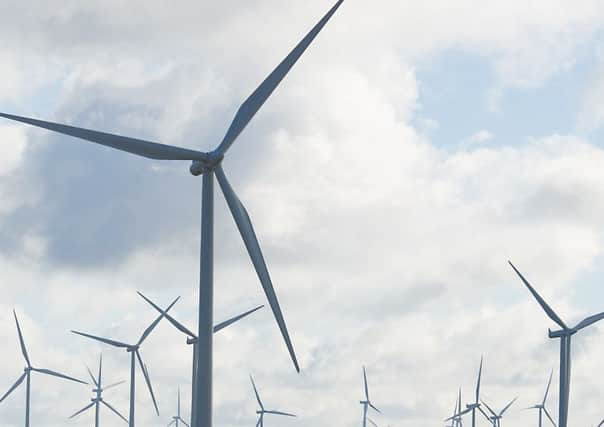Why are Scottish windfarms being built 7,000 miles away instead of Fife? – Dr Richard Dixon


On Friday, I was marching with the school strikers for climate action in Edinburgh. More than 1,600 events took place in 125 countries, all organised by children who want decision-makers to do more on climate change, including transforming our energy system.
In last week’s column I wrote about the need for a ‘Just Transition’ to help workers and communities move from dependence on high-carbon jobs to zero-carbon jobs.
Advertisement
Hide AdAdvertisement
Hide AdA study we were involved with suggested the potential for three times as many jobs in the zero-carbon energy sector as in oil extraction, plus the jobs that will be sustained for a couple of decades in decommissioning North Sea oil infrastructure. But we are already beginning to see that the market does not deliver them in the right places.
Three years ago, the ironically named Transocean Winner oil rig went aground in the Western Isles when it broke its tow line in a storm. This rig was being retired from operations in the Norwegian North Sea. But instead of being dismantled in Norway or a yard in the UK, it was being towed all the way to Turkey where cheap labour would save money.
Last week it emerged that almost all of the major steelwork for the £2 billion Neart na Goaithe offshore windfarm off the Fife coast is to be fabricated in Indonesia, rather than at the BiFab yards in Burntisland and Methil that are sitting idle.
These yards are about 40 miles from the site of the windfarm; Indonesia is more than 7,000 miles away. This is a crazy decision in environmental and social terms.
If you go to the NnG windfarm’s official website, it is either deeply ironic or deeply suspicious that the link that is supposed to tell you more about how “NnG will create thousands of Scottish jobs for every year of construction” does not currently work.
GMB, Unite the Union and the STUC have set up a campaign, which we are supporting, to try to get EDF to make a different decision.
Other companies are doing only a little better. Scottish Power has an even larger offshore windfarm in East Anglia. About a quarter of the major steelwork is coming from the UK, but more than half is coming from the UAE.
Why are we relying on the goodwill of companies to decide how much largesse they will bestow upon the UK? Their decisions are partly driven by fierce price pressure when bidding to be allowed to construct a scheme in the first place. Having to bid low means they have to go for the cheapest option for everything, even if that leads to ridiculous decisions. This might make the electricity from these schemes slightly cheaper but the public will be paying for the legacy of redundant workers and blighted communities for decades to come.
Advertisement
Hide AdAdvertisement
Hide AdThe UK Government needs to ensure more of the benefits, especially the jobs, stay in the UK. And they have plenty of leverage to do that. Because of incredibly generous agreements with the oil companies, the tax payer will be paying around half the cost of decommissioning rigs and other structures in the North Sea. It is the UK and Scottish governments which control the many licences and permits needed to construct offshore windfarms, and decide which go ahead and which do not.
To make the Just Transition real, both governments need to urgently use their powers to create zero-carbon jobs at home.
Dr Richard Dixon is the director of Friends of the Earth Scotland
